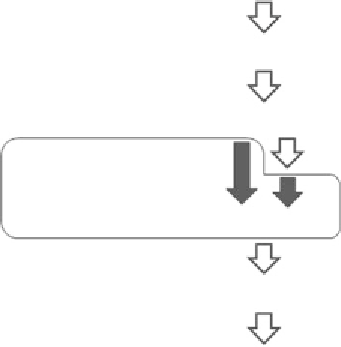Biology Reference
In-Depth Information
1
Introduction
Posttranslational modifi cations (PTMs) represent the most com-
mon mechanism by which protein functions can be altered. Cellular
signaling networks usually utilize PTMs to transmit signals. To
completely understand the molecular mechanisms of signaling
pathways, and to isolate signaling factors, it is necessary to monitor
the PTM status of proteins during signal transduction. Proteomics
is one of the best available tools for studying PTMs. Therefore, it
is well suited for the analysis of unknown signaling pathways.
Among the several PTMs described thus far, phosphorylation
is the most extensively studied, and it has been shown to play a role
in a wide range of physiological responses [
1
]. Advances in liquid
chromatography-mass spectrometry (LC-MS)-based techniques,
together with complete genome sequencing, have paved the way
for high-throughput, large-scale, proteomics analysis (shotgun
proteomics). However, the current proteomics technology based
on large-scale analysis of PTMs requires several improvements.
Typically, in shotgun proteomics, trypsinized peptides derived
from crude protein samples are analyzed, but the number of pep-
tides with a single PTM represents only a very small fraction of the
total number of peptides produced, so very few peptides with
PTMs are identifi ed. One of the key requirements for successful
PTM-oriented proteomics (modifi ed proteomics) is to establish
effi cient enrichment methods for posttranslationally modifi ed pep-
tides or proteins (Fig.
1
).
Plant materials
Protein extraction
Lysate proteins
Digestion by protease (e.g. Trypsin, LysC)
For phosphoproteomics
Peptides
Pre-fractionation (e.g. SCX)
Phosphopeptide enrichment
(e.g. IMAC, MOC, HAMMOC)
Phosphopeptides
LC-MS
Database search engine (e.g. Mascot, Sequest)
Phosphopeptide identification
Fig.
1
Typical workfl ow in shotgun proteomics

